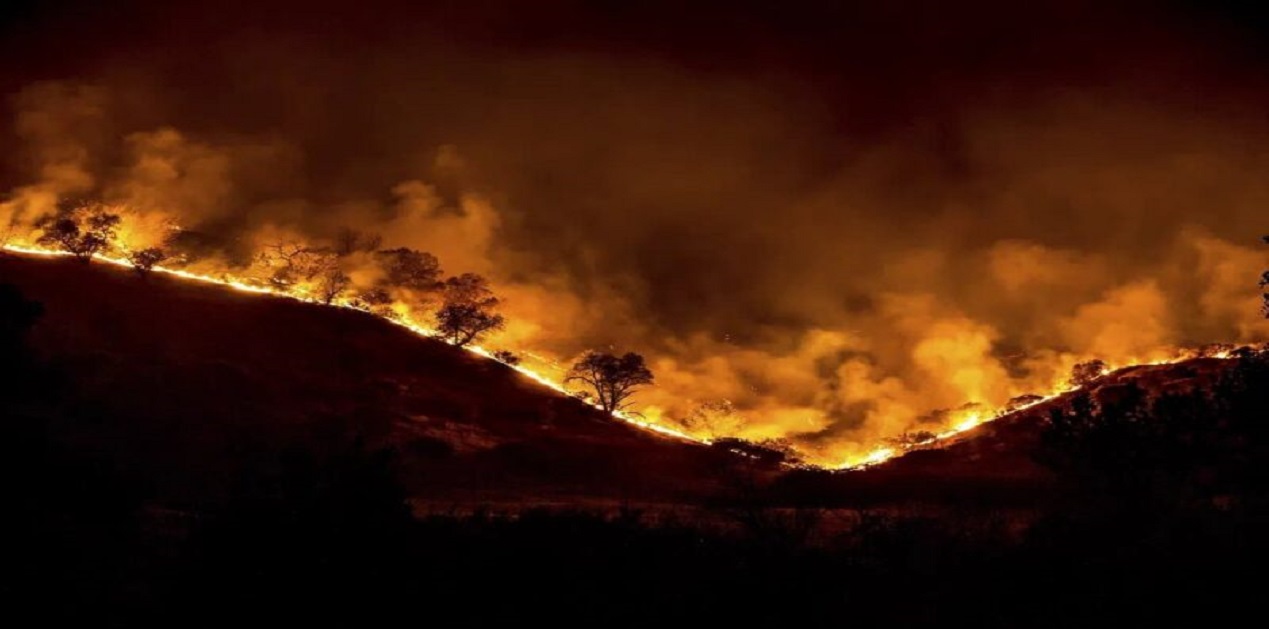Introduction
2023 was a watershed year for climate change. As record after record was broken that year, experts lamented that the world may have reached an inflection point. For example, CO2 levels in the atmosphere are projected to reach record levels of more than 40 billion tons, including nearly 37 billion tons from fossil fuels. [1] That was the highest for at least 2 million years.[2] Overall emissions in 2023 are up 1.1% compared to 2022 levels, and 1.5% compared to pre-pandemic levels. As a result, the world is now on the verge of running out of “carbon budget.” Carbon budget is the amount of CO2 that can be emitted in order to stay within 1.5°C above pre-industrial (1850-1900) temperatures. That level of warming is considered a critical threshold. According to a study that was published in the journal Nature in November 2023, only about 250 billion tonnes of CO2 can now be emitted to avoid the accumulation of CO2 in the atmosphere that would raise temperatures by 1.5°C.[3] And at current annual rates of CO2 emissions, the world’s carbon budget required for staying within 1.5°C would run out well before the end of this decade. Consequently, there is now a 50% chance that global warming will exceed 1.5°C consistently around 2030. Owing to increased accumulation of CO2in the atmosphere and the return of El Niño, 2023 is projected to be the hottest year on record surpassing the previous joint hottest years of 2016 and 2020.[4] In fact, the EU’s Copernicus Climate Change Service (C3S) observed that global mean temperature for the first 11 months of 2023 are the highest level on record, 1.46°C above the preindustrial average.[5] It is therefore unsurprising that record-breaking extreme weather – heat waves, drought, wildfires, floods, tropical cyclones, etc. -have ravaged various parts of the world in 2023. Leading climate scientists warned that the “crazy” extreme weather of that year was just the “tip of the iceberg” compared with the even worse impacts to come.[6]
Record-breaking Temperature and Extreme Heat
Throughout 2023, records for the warmest temperatures around the world were broken one after the other. In Asia, Thailand recorded its highest temperature of 45.4°C in the city of Tak on 15 April. Vietnam also recorded its highest temperature ever of 44.2°C in the northern district of Tuong Duong on 14 May. Neighbouring Laos also recorded 43.5°C in Luang Prabang on 6 May. Then on 16 July, China recorded its highest temperature ever of 52.2°C in Sanbao Township in Xinjiang. Temperature records are also shattered across Europe and North America and that has triggered life-threatening heat waves. It is not just land surface temperatures that have broken records. Ocean temperatures have also hit 20.96°C in July, breaking the record of 20.95°C reached in 2016.[7] Back in 2020, it was reported that oceans are warming at the same rate as if five Hiroshima atomic bombs were dropped in every second.[8] As a result, more than 40% of the world’s oceans now experiences marine heat wave.[9] Warming oceans are a concern for many reasons. Seawater takes up more space at higher temperatures, accelerating sea level rise, and warmer water at the poles accelerates the melting of the ice caps. For example, Antarctic sea ice reaches its lowest levels ever recorded, 1.79 million square kilometers, on 25 February 2023. Warming oceans could also prove disastrous for marine ecosystems as it can be difficult or impossible for species to adapt. Corals in particular can suffer devastating bleaching. Oceans also acted as a kind of global buffer to climate change by absorbing vast amounts of CO2 from the atmosphere and by storing about 90% of the excess energy and heat that this has created. That helps to dampen some of the impacts of global warming on land. Scientists now fear that the world could be reaching the limit of the oceans’ capacity to absorb these excesses.
Historic Wildfires
Heat waves sustained persistent dry conditions, facilitating the intensification and spread of wildfires in many countries. From June 2023, fire ravaged Canada like no other year. A record 185,000 square kilometers from Nova Scotia in the east to British Columbia in the west went up in flames, an area almost as big as Syria and about twice the size of Portugal, shattering the previous annual record nearly three times over.[10] The fires were largely centered on Canada’s vast boreal (meaning northern) forests, a trove of habitat for creatures such as moose, bears and songbirds and a crucial carbon bank that blankets an area larger than India, representing about 25% of the world’s remaining intact forest. The fires released 2 billion tons of CO2 - probably triple the country’s annual carbon footprint. The US also experienced its deadliest wildfire in more than a century. On 8 August, a devastating wildfire scorched the town of Lahaina in Hawaii killing 100 people and displacing 11,000 others. It also destroyed more than 2,000 buildings. Apocalyptic fires also blazed through northeastern Greece following weeks of high heat. The fires, the largest ever recorded in the EU, burned more than 810 square kilometers - an area bigger than New York City and Singapore.
Extreme Rainfall and Unprecedented Floods
Rising temperature has affected the intensity and frequency of rainfall. For example, warmer air can hold a greater amount of moisture, about 7% more per 1°C of warming.[11] The moisture accumulates in the atmosphere and stay there longer, increasing the length of dry spells. But when it rain, all the accumulated moisture gets released within a very short time often with devastating impact. Mountain regions are particularly vulnerable to this phenomenon - it was projected that rainfall there would increase by 15% for every 1°C the world warms. In 2023, relentless monsoon rain in the state of Himachal Pradesh caused disastrous floods and landslides. More than 400 people lost their lives and 13,000 houses and a number of critical infrastructures are either partially or fully damaged. The total cost of damages was estimated at USD 1.2 billion.[12] Then in October, a glacial lake outburst in Sikkim caused the Teesta III dam to collapse causing unprecedented flood. As a result, more than 40 people lost their lives. The flood also damaged 33 bridges, 16 roads and highways, and many houses. By far the most devastating impact of extreme rainfall and flood in 2023 was felt by Libya in North Africa. In September, the country was struck by Storm Daniel, a Mediterranean hurricane-like system known as a medicane. The northern coastal city of Derna was hit the hardest. In a single day, Storm Daniel unleashed 200 times as much rain as usually falls on the city in the entire month of September. The city’s two key dams collapsed and that led to catastrophic flooding. More than 10,000 people are believed to have died and thousands more are missing.
Long Lasting Droughts and Water Scarcity
Drought-like condition continue to persist in many countries in 2023. For example, Kenya, Ethiopia and Somalia have been suffering their worst drought in 40 years after six consecutive years of below-average rainfall. The drought has led to substantial harvest failure, poor pasture conditions, livestock losses, decreased surface water availability, massive population displacement, and even human conflicts. In all, 22 million people are at risk of acute food insecurity and potentially famine.[13] Europe too witnessed its driest summer in 500 years in 2023. As water levels dropped in rivers such as the Danube, Loire, Po, Rhine, etc. fell, there are concerns that crops, power plants, barge traffic, industry, and fish populations would be adversely affected. Meanwhile, the “extreme drought” that gripped Syria, Iraq, and Iran since 2020 also persisted. In the Tigris-Euphrates basin, which covers large parts of Syria and Iraq, droughts of this severity happened about once every 250 years before global warming - now they are expected once a decade.[14] In Iran, extreme drought occurred once every 80 years in the past. But now, it strikes the country every five years on average. Existing vulnerability from years of war and political instability had reduced people’s ability to cope with the drought, turning it into a humanitarian disaster. Furthermore, new data from the World Resources Institute’s (WRI) Aqueduct Water Risk Atlas show that 25 countries - home to 25% of the global population - are currently exposed to extremely high water stress annually, meaning they use over 80% of their renewable water supply for irrigation, livestock, industry, and domestic needs.[15] And at least 50% of the world’s population - around 4 billion people - lives under highly water-stressed conditions for at least one month of the year. Living with this level of water stress jeopardizes people’s lives, jobs, food, and energy security. Without better water management, population growth, economic development, and climate change are poised to worsen water stress. The five most water-stressed countries are Bahrain, Cyprus, Kuwait, Lebanon, Oman, and Qatar. The most water-stressed regions on the other hand are the Middle East and North Africa, where 83% of the population is exposed to extremely high water stress, and South Asia, where 74% is exposed.
Outlook for 2024
Since the current El Niño was expected to last until at least April 2024, it is highly probable that 2024 will be even hotter than 2023. As a result, weather events could become even more extreme. Countries less able to rebuild or who have contributed least to climate change will continue to suffer the most. As such, there is an urgent need to fund adaptation sufficiently. Towards this end, nearly 200 countries agreed during the 2023 UN Climate Change Conference or COP28 that was held in Dubai to set up the loss and damage fund to help the world’s poorest and most vulnerable countries pay for the irreversible impacts of climate disaster. Wealthy countries most responsible for climate change have so far pledged a combined total of just over USD 700 million to the fund. That included Italy (USD 108 million), France (USD 108 million), Germany (USD 100 million), the UAE (USD 100 million), the UK (USD 75 million), Denmark (USD 50 million), Ireland (27 million), the EU (27 million), and the EU (USD 27 million), Norway (USD 25 million), the US (USD 17.5 million), and Japan (USD 10million), etc. The pledges however are like a drop in the ocean of what is needed i.e. more than USD 400 billion a year according to one estimate.[16] The clamour for wealthy countries to do more to address climate change and compensate the poorest and most vulnerable countries for loss and damages will therefore continue to be a key agenda in 2024 and beyond. While every country has an obligation to do what they can to address climate change, developing countries in particular should be leading by example in tackling the causes of climate change, particularly fossil fuels. Decisions they made now will have an impact on how much temperatures will rise and the degree and severity of impacts the world will see as a result. Else, the exceptional events of 2023 could become normal in just a decade. This is therefore a critical decade for climate change. The window of opportunity is tiny, but it is still open. But it could close for good very soon.
End Notes
[1]https://sustainability.stanford.edu/news/global-carbon-emissions-fossil-fuels-reached-record-high-2023
[2]Intergovernmental Panel on Climate Change (IPCC). 2021. “Climate Change 2021: Summary for All.” Working Group. Technical Support Unit. Version 3, 12 December.
2022https://www.ipcc.ch/report/ar6/wg1/downloads/outreach/IPCC_AR6_WGI_SummaryForAll.pdf
[3] Lamboll, Robin D., Zebedee R. J. Nicholls, Christopher J. Smith, Jarmo S. Kikstra, Edward Byers, and Joeri Rogelj. 2023. “Assessing the size and uncertainty of remaining carbon budgets.” Nature Climate Change. 13. Pp. 1360-1367. November 6. https://www.nature.com/articles/s41558-023-01848-5
[4] “2023 shatters climate records, with major impacts.”World Meteorological Organization (WMO). Press Release. November 30, 2023. https://wmo.int/news/media-centre/2023-shatters-climate-records-major-impacts
[5] “2023 to be hottest year on record, EU scientists say.” Reuters. December 6, 2023.
https://www.reuters.com/business/environment/climate-change-2023-will-be-warmest-year-record-eus-copernicus-2023-12-06/#:~:text=Dec%206%20(Reuters)%20%2D%20European,above%20the%201850%2D1900%20average.
[6]Carrington, Damian, Nina Lakhani, Oliver Milman, Adam Morton, Ajit Niranjan and Jonathan Watts, “Off-the-charts records’: has humanity finally broken the climate?” The Guardian. August 28, 2023. https://www.theguardian.com/environment/2023/aug/28/crazy-off-the-charts-records-has-humanity-finally-broken-the-climate
[7] “Global sea surface temperature reaches a record high.” Copernicus Climate Change Service, August 8, 2023 https://climate.copernicus.eu/global-sea-surface-temperature-reaches-record-high
[8]Kottasova, Ivana. “Oceans are warming at the same rate as if five Hiroshima bombs were dropped in every second.” CNN, January 13, 2020.
https://edition.cnn.com/2020/01/13/world/climate-change-oceans-heat-intl/index.html
[9] “Global ocean roiled by marine heatwaves, with more on the way.” National Oceanic and Atmospheric Administration (NOAA), June 28, 2023.
https://research.noaa.gov/2023/06/28/global-ocean-roiled-by-marine-heatwaves-with-more-on-the-way/
[10] “Wildfire Graphs,” Canadian Interagency Forest Fire Centre Inc. (CIFFC). Undated.
https://ciffc.net/statistics
[11]Ombadi M, Risser MD, Rhoades AM, and Varadharajan C. 2023. “A warming-induced reduction in snow fraction amplifies rainfall extremes.” Nature, June 28. 619 (7969)
https://www.nature.com/articles/s41586-023-06092-7#:~:text=Our%20results%20show%20that%20a,the%20increase%20of%20rainfall%20extremes.
[12] “India: Himachal rains caused loss of $1.2 billion, will take a year to redevelop, says CM Sukhu.” WION, August 16, 2023.
https://www.wionews.com/india-news/india-himachal-rains-caused-loss-of-12-billion-will-take-a-year-to-redevelop-says-cm-sukhu-626061
[13] “Regional Drought Response Plan for the Horn of Africa: 2023.” World Food Programme (WFP). January - December 2023.
https://docs.wfp.org/api/documents/WFP-0000146045/download/?_ga=2.176544674.605458285.1704697595-1132947004.1704697594
[14]“Human-induced climate change compounded by socio-economic water stressors increased severity of drought in Syria, Iraq and Iran.” World Weather Attribution, November 8, 2023.
https://www.worldweatherattribution.org/human-induced-climate-change-compounded-by-socio-economic-water-stressors-increased-severity-of-drought-in-syria-iraq-and-iran/
[15]Kuzma, Samantha, Liz Saccoccia and Marlena Chertock. “25 Countries, Housing One-quarter of the Population, Face Extremely High Water Stress”, World Resources Institute (WRI). August 16, 2023. https://www.wri.org/insights/highest-water-stressed-countries
[16]Richards, Julie-Anne, Liane Schalatek, Leia Achampong, and Heidi White, 2023, “The Loss and Damage Finance Landscape”, Discussion Paper, Heinrich-Böll-Stiftung, Washington, DC
https://us.boell.org/sites/default/files/2023-05/the_loss_and_damage_finance_landscape_hbf_ldc_15052023.pdf
(The paper is the author’s individual scholastic articulation. The author certifies that the article/paper is original in content, unpublished and it has not been submitted for publication/web upload elsewhere, and that the facts and figures quoted are duly referenced, as needed, and are believed to be correct). (The paper does not necessarily represent the organisational stance... More >>
Image Source: https://www.lse.ac.uk/granthaminstitute/wp-content/uploads/2023/09/woolsey-fire-California-e1694182581755.jpg











Post new comment